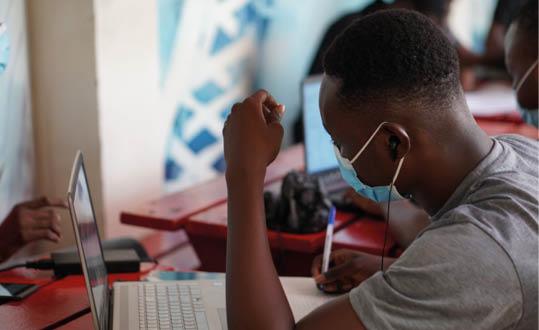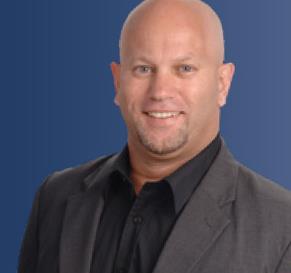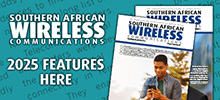06 September 2021

Lack of access to reliable and affordable electricity and other services make accelerating Africa’s broadband penetration difficult. But what are the other reasons? Robert Shepherd poses the questions
Every few months comes a new report about Africa’s broadband/internet penetration – or lack thereof. What’s more, it’s not always easy to tell which paints the most accurate picture, with figures often skewed to suit a certain narrative.
One thing that’s very clear is that broadband and internet penetration has never been more important, according to Richard Jacklin, director of sales, ViaLite Communications. “Covid-19 has brought in ‘lockdown’, requiring adults and children to be kept within the homestead,” he adds. “For employees who can perform their work on a broadband connected device then connectivity to the home is essential to continue that work. Similarly for children and students, moving classes on-line also necessitates a broadband connected device. So broadband penetration is critical to enable this and reduce the number without access to the connected technology – the digital divide.”
“These functionalities of wireless tech and 5G could help the governments in African countries to close the gaps in governance and deliver services like healthcare and education on a mass scale by side-stepping infrastructural challenges with Open RAN”

Christoph Fitih, Parallel Wireless
What’s also clear is the world’s richest and most developed countries are committed to engagement in the race for digitalisation of their economies and societies.
However, with its foundations embedded firmly in faster and expanded national broadband infrastructures, Africa lags behind, with numerous broadband access technologies still only scraping the surface of the continent’s unmet and growing connectivity needs. Time to ask why.
Time to bore you with some facts, but they are necessary, so stay with me at the back.
As the second largest continent by land mass and population with circa 1, 340, 598, 147 inhabitants in 54 countries, broadband access is only enjoyed by a third of the population. What’s more, achieving universal, affordable and good quality internet access by 2030 will require an investment of at least US$100bn. This is according to a report (The Broadband for All Working Group) launched at the Annual Meetings of the World Bank Group in 2019, which called for urgent action to close the internet access gap while providing a roadmap to reach this ambitious goal.
Compare that to the 27-nation European Union, where in 2020, Statista, a German company specialising in market and consumer data, recorded that 89% of households in the EU-27 had access to broadband internet.
So, let’s get to the point: why in 2021 are large swathes of Africa still without broadband?
Farhad Khan, chief commercial officer of Yahsat and chief executive officer of YahClick, says it’s linked to the sparse distribution of communities that are in rural areas and the high cost of connection per subscriber. “Unlike in the dense urban and suburban areas, where the delivery of fibre and installation of cell towers have economic benefits for operators, the rural areas rely on USO (universal services obligations) and donor funding or project funding to pay for access technology,” he adds. “In addition, lack of electricity makes it difficult for operators, as diesel theft is rampant, and natural power technology costs have not reached critical mass economics.”
For Brian Jakins, regional vice president of Africa sales, at international communications satellite services provider, Intelsat, there are two key reasons: “Africa is a vast continent and the differences in terrain can make it difficult to access certain regions,” says Jakins. “The cost of handsets, energy and data can also be too high for some populations.” More on cost later.
US-based Open Radio Network (Open RAN) specialist Parallel Wireless has a long and rich history in Africa, partnering with some of the biggest players on the continent. Christoph Fitih, sales director, Africa extolls the virtues of the technology and highlights the difference it’s making.
“The mobile penetration in Africa remains at 44%, which means over 600 million people in Africa are still without mobile connections,” he says. “The internet penetration in the continent is still at 25-30%. The biggest advantage of Open RAN as the technology to build 2G, 3G, 4G, and future 5G networks in Africa is that it brings down the capital as well as an operational expense and at the same time improves the experience for the end consumer. Infrastructure based on Open RAN can deliver high data speed, low latency, effective use of spectrum, better coverage, and support a larger number of devices.”
As a result, Fitih says it enables service providers to offer several innovative services like augmented reality, virtual reality, remote surgery, autonomous transport system, industrial automation and more. “These functionalities of wireless tech and 5G could help the governments in African countries to close the gaps in governance and deliver services like healthcare and education on a mass scale by side-stepping infrastructural challenges with Open RAN,” he continues. “It enables the authorities to provide services, including e-learning and e-health, through digital platforms, which is more cost-effective and improves lives of people across the continent.”
Statista provides an interesting breakdown of internet users in Africa – as of December 2020 – by country.
At the top is Kenya with 85.2%, followed closely by Libya with 84.2%. Nigeria 73%, Mauritius 73% and Seychelles 72.2% make up the top five. Kenya’s spot will come as no surprise, owing to its dominant position in the mobile money space, while Libya is going through a renaissance in the post Muammar Gaddafi era. Mauritius and Seychelles are investing heavily to service the tourists who frequent the Indian Ocean islands.
Indeed, the future looks bright for Nigeria - projected to double its 200m population by 2050 - which is embracing improved broadband connectivity.
For example, South Africa’s MTN announced plans to invest ₦640bn (US$1.5bn) in the west African nation over the next three years to improve access to broadband.
MTN’s investment in Nigeria is in line with the National Broadband Plan 2020-2025 adopted by the government last year, which aims to increase the penetration rate of quality Internet connectivity to 90%. It is also in line with the company’s “Ambition 2025” development strategy, which is to become a “leading provider of digital solutions for Africa’s progress”.
Craig Thomas, vice president strategic marketing and business development at the body Broadband Forum, says the marketplace for broadband experience in the African region is diverse and is characterised by limited fixed broadband penetration. “In more developed areas, customers have the choice of mobile networks such as 4G, 5G, fixed wireless access, fixed access and satellite technology,” he says. “Where internet connectivity is limited to 3G or 4G, that inaccurately becomes the expectation of what broadband is. There is a clear argument to invest once and look at the broadband access network holistically to deliver next-generation access. One unified access network can integrate all technologies, with the final access technology the only variable as the network can be built to accommodate all broadband access technologies.”
“This really could be a game changer for the rural coverage black spots, emergency scenarios and connecting the next billion using a standard smartphone”

Richard Jacklin, ViaLite Communications
Jakins is of the view that Africa, with its burgeoning economies and rising youth populations, is transforming quickly, with cross-generation entrepreneurs set to drive the continent into its next phase of development, and broadband connectivity is a key enabler.
“Submarine cables running up and down Africa’s coasts, combined with fibre-optic cables and cellular towers, have dramatically improved access to connectivity in the continent over the past 10 years,” he says. “Yet, last-mile connectivity remains a challenge and according to GSMA, as of the end of 2019, 670 million people were still not covered by mobile broadband (3G or higher). The Covid-19 crisis highlighted even more the digital divide across the continent as people become even more dependent on connectivity for work but also to access news, health, finance services and education, as well as communicate with friends and family.”
Time now to learn of some other figures. Martin Jarrold, vice president international programme development at GVF, the global non-profit association of the satellite industry, cites that broadband penetration figures for Africa – including 3G and 4G mobile connections – “do significantly vary by region” (southern = 62%, northern = 56%, western = 42%, eastern = 24%, central = 26%). “Expansion of broadband networks (not necessarily exclusively based on mobile/cellular technology, as will be explored below) and increasing these internet access percentages has many challenges,” he adds. “One of these challenges is that meeting Africa’s 2030 internet access target and carrying the burden of the US$100bn investment funding requirement is beyond the capability and means of any one of the stakeholder types sitting on the Broadband Commission for Sustainable Development.”
“The cost of handsets, energy and data can also be too high for some populations”.

Brian Jakins, Intelsat
Of course, there are other challenges. Covid-19 has been felt throughout the ecosystem surrounding the internet and communications technology everywhere and certainly across Africa with the build-out of mobile/cellular networks being slowed due to various reasons. They include the declining affordability of network access as disposable incomes have declined during the pandemic, says Jarrold. “This has happened exactly as internet access has become even more vital, as the pandemic has manifest itself as a driver of an even greater need for bridging the digital divide,” he says.
American, Asian, British, French, Italian and Middle Eastern companies – among others – in the telecommunications and technology sectors continue to invest in Africa.
While there have been a number of success stories, it can still be a notoriously tricky place to do business for a number of reasons. However, one stands out more than the others, argues Jakins.
“Infrastructure in Africa remains the biggest challenge for telecom operators,” he says. “Reaching the remote communities, in dire need of connectivity, is often uneconomical or not feasible. This creates a very meaningful opportunity for satellite technology, which is the most effective and cost-efficient way of connecting these communities.” Jakins adds that satellite “is typically the only practical way to provide connectivity” to areas underserved or un-served by terrestrial networks, where economics do not make sense. “Satellite’s ubiquitous coverage means that there are no ‘last mile’ issues, while the scalable and cost-effective space-based solutions can help countries meet connectivity challenges quickly,” he says.
Jarrold counters that the state of Africa’s broadband does not rest on the single issue of physical infrastructure roll-out. “Coordinated efforts by governments, the private sector, development agencies and civil society are necessary in supporting the prioritising of development of an overall ICT environment,” he says.
Nevertheless, being a satellite official, he echoes Jakins’ views on the technology and adds that there are challenges and obstacles to broadband access that cannot be blamed on power and pandemic. “To put it bluntly, terrestrial broadband infrastructure has fundamental limitations,” Jarrold says. “Fibre landing from the trans-oceanic floor serves well many of the continent’s coastal major cities their commercial business districts and richest residential neighbourhoods but is too expensive and impractical to roll-out far inland.” He doesn’t stop there – arguing that microwave towers are also expensive and geography and topography “can create too many practical deployment problems” for line-of-sight based services. “Mobile wireless cellular technology has been a considerable connectivity game-changer for Africa, but it does not have all the solutions to Africa’s broadband connectivity needs within its ‘gift’,” Jarrold continues. “That is where and why satellite is now playing a bigger role in Africa’s broadband connectivity expansion than ever before, an expansion that is significantly evolving away from any concept of satellite as a stand-alone technology used only as a rural and remote area service provision gap-filler. The era of the ‘creative partnership’ is what is beginning to change Africa’s broadband connectivity/internet access status.”
We know that terrain, cost and inconsistent power have often been used as blunt tools to explain Africa’s slow progress in the broadband connectivity space. Another is politics.
Jakins says governments the length and breadth of Africa have understood the importance of broadband connectivity and are working on accelerating its deployment. “For instance, Intelsat, Liquid Telecom and senior leaders from the Rwandan government have been working together to support a pilot project in Rwanda that tests the viability and sustainability of VSAT based broadband services to connect schools in underserved areas to the internet,” he adds. “Also, South Africa’s Department of Telecommunications and Postal Services (DTPS) has partnered with its social partners and the World Economic Forum to develop the South African Internet for All initiative (Internet4Mzansi).”
He explains how through a strategic partnership Intelsat, Didusec and Sentech have rolled out five Wi-Fi hotspot pilot sites at locations selected by DTPS. “Private-public partnerships and innovative business models can help governments accelerate the deployment across the whole region,” he says.
While the number of broadband connections in Africa crossed the 400 million mark in 2018 (nearly twenty times 2010 levels), the regional average broadband penetration —including 3G and 4G connections— is only just north of 25%. Mobile broadband coverage in Africa is still at 70% of the population. Even in north Africa, there is ample room for growth with 4G networks covering only about 60% of the population.
Nevertheless, there continues to be an almost tangible disparity between north African countries and sub-Saharan nations, as well as those much further south.
Jakins believes that’s because sub-Saharan Africa “is one of the most difficult and challenging regions of the world to connect because of its geographic complexities” and number of remote communities. “Also, north African countries were amongst the first ones on the continent to get connected with two fibre-optic submarine cables, out of the three connecting the entire continent, dedicated to north Africa from 2008,” he says. “This early adoption helped north African countries pursue the deployment.”

Khan’s analysis is a little starker. “The disparity is largely historical, with the divergences accentuated by massive differences in GDP and monetisation of resources, governance and related fiscal agility,” he says. “We must also consider the magnitude of corruption and literacy levels.”
Farhad Khan, CCO of Yahsat and CEO of YahClick concurs.
“Besides the challenges in the roll-out of infrastructure described above, pricing is a stumbling block,” he says. “Whether it’s a mobile device, or customer premises equipment (CPE) for fibre/VSAT, the question is often one of affordability. If the CPE or device is subsidised, then cost of access is contended with essentials like rent and food, as the disposable income in some of these regions is often on average US$2-3 per day, if not less.”
Khan adds that Africa cannot be treated as a single homogenous entity. “Whilst southern Africa and north Africa are in line with the global benchmark of 60% internet and broadband penetration, a big cause for concern is the west Africa cluster at an average of 40% and east and central Africa at approximately 25%,” he says.
It’s a view shared by Jarrold, who says the continent should be treated as 54 countries. He adds that generalisation is always problematic but sometimes serves a purpose when trying to grasp a broad and complex problem in the most intelligible and easily digestible terms.
“To achieve anything like universal broadband access, it will require that an additional 1.1 billion people get online,” Jarrold continues. “The World Bank’s call for action to close the internet access gap – the ‘digital divide’ – includes the estimate that realising universal, affordable, and good quality internet access by the 2030 target for achieving the United Nations Sustainable Development Goals will require an investment of US$100bn.”
It’s hard to reach a clear conclusion as far as improvement as to the future of Africa’s broadband connectivity is concerned – that’s because many of the points raised in this piece have been aired on many times over the years.
The good news is entities such as the World Bank Working Group on Broadband for All and the Broadband Commission for Sustainable Development have identified investment requirements and policy roadmaps to increase connectivity and to reach full coverage in Africa.
So, is enough being done to improve broadband connectivity in Africa?
Jacklin says there’s still some way to go to get to the types of broadband penetration rates needed for a technically advanced and connected economy. “I guess this forms a large part of the business case for new LEO based satellite services,” he says. LEO constellations are being built on completely different economics compared to the GEO systems; the satellites are mass produced and lightweight, the launch costs have reduced significantly as they launch large batches, and huge effort is being applied to produce lower cost user terminals. These terminals will be ideally suited for roll out across Africa.”
Moreover, Jacklin points to one other connectivity technology “that is worth watching out for” is what he calls “Cellular from Above”. He believes “this market really is an exciting area of telecoms combining capabilities of the 4G / 5G standards interoperating with standard off-the-shelf smartphones”, along with new flying platforms including stratospheric planes and LEO satellite. “This really could be a game changer for the rural coverage black spots, emergency scenarios and connecting the next billion using a standard smartphone,” he concludes.
The investment is there and so is the willing, but some things just take time.
As the old African proverb goes: “Only a fool tests the depth of a river with both feet.”






